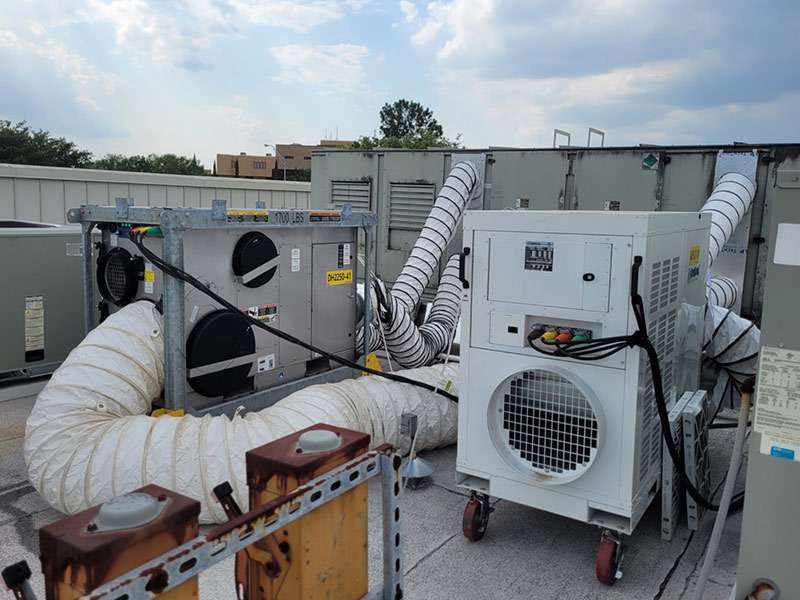While moisture can be managed and dealt with, in many instances, too much or too little can impact job sites and projects. When it’s time to control moisture at a job site, a dehumidifier is a must-have machine. Here’s what you need to know before renting a dehumidifier for your construction site.
When is a Dehumidifier Necessary?
Desiccant dehumidifiers (most commonly used on large projects) remove moisture by drawing air into the machine, sending air through a rotating silica gel wheel that dries the air, then exhausts the newly dried air through the process outlet. Other smaller portable refrigerant dehumidifiers can be used, but we will focus on desiccant dehumidifiers for this article. A rental desiccant dehumidifier is extremely useful in construction, where you want to eliminate or control moisture. This includes tasks like adding trim, painting surfaces, hanging drywall, and installing flooring. These tasks require low moisture in the air for the best results to ensure the materials remain firmly in place. If your workers install these features in a humid environment, the moisture in the air can interfere with adhesives or prevent damp materials from drying properly. This is especially true with wood projects. It’s best to install wood in a stable environment – not too dry or too humid, to avoid shrinking or expanding when the “normal conditions” of the building arrive. Failing to accommodate materials before and during installation can result in wood trim with gaps or flooring that pops up from failed adhesives, resulting in expensive repairs or complete remodelling.
How to Find the Right Dehumidifier?
As stated earlier, there are different types of dehumidifiers with varying levels of power and functionality. The two most common are desiccant dehumidifiers and low-grain-refrigerants (LGR). Desiccants are traditionally larger units, requiring more power and are less portable. LGRs, on the other hand, are very portable and can run on traditional 110v outlets but do not deliver the level of deep drying that is needed in many commercial applications. This is where the benefit of renting comes in. By renting dehumidifiers, you can have the best size and type for your job each time. Renting also allows you to have the freedom to try different models to find the best one for your project.
Key Things About Renting a Dehumidifier
Your project seemed fine until you detected damp areas and noticed different materials not drying. Now, you’re wondering, “Where can I find a dehumidifier rental?” You can call CHI, and we’ll walk you through the rental process, asking questions to help determine the right dehumidifier and ideal size. But before that, here are a few things to remember to ensure your project’s success.
Have a Sense of Urgency
Once you realize that you have an enduring moisture issue, act quickly to address it. Dehumidifying quickly helps prevent additional moisture development or material damage. If you also experience temperature issues, you can ask your CHI representative about temperature control equipment, whether heating or cooling. Acting swiftly is crucial; otherwise, possible damage and delays can impact your job site or project.
The Timing Can Vary
Once a dehumidifier is installed, the change will happen quickly. You will notice a difference within a day and, in many cases, within hours. Just because the moisture is gone doesn’t mean you no longer need the dehumidifier. If the external weather is still humid or there is no permanent HVAC system, the moisture will most likely return when you stop using the dehumidifier. Finish any large parts of the project and re-assess the situation, which can entail monitoring the weather, planning for what types of work processes remain, and considering any damage to materials, installation or production if the humidity and high moisture levels were to return.
Using a rental dehumidifier is a great way to tackle sensitive points of a construction project. Typically, this is the finishing stage during flooring and wood installation, but it can help with concrete drying. Beyond moisture control, temperature control can be a vital component of managing an interior climate, and a team such as CHI can help determine the best equipment for different stages of your work. Contact CHI today for more information or to ask any questions about a solution!

